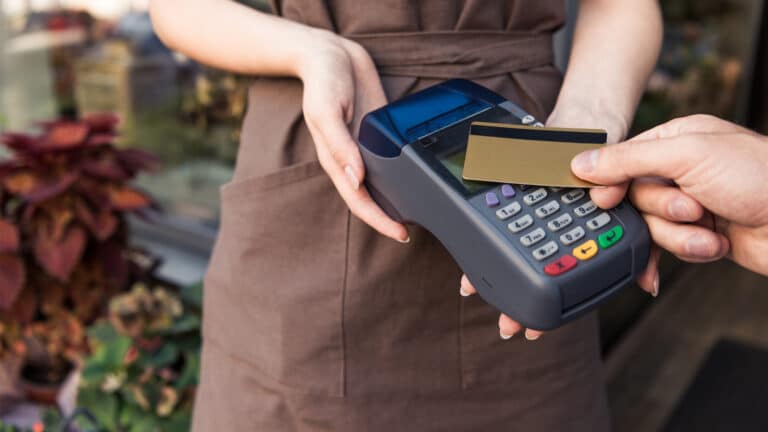
Canada’s Lexaria Bioscience, with a market capitalization of just over $50 million on the Nasdaq, is in the business of transforming the delivery of other companies’ drugs. After years of trying to find its niche, the company now intends to make globally best-selling injectable diabetes and obesity drugs from Novo Nordisk and Eli Lilly, like Wegovy and Zepbound, into pills using its patented technology. This new focus has already massively boosted Lexaria stock since the beginning of the year.
The right pivot
Founded in 2004, Lexaria initially explored and developed oil and gas fields. It acquired stakes in early-stage projects, hoping to profit from their production. By 2013, however, the company had incurred significant losses, which cast doubt on its business model.
In 2014, after a decade in the oil and gas industry, Lexaria made an unexpected pivot, moving into the Canadian cannabis market. The specifics of how it arrived at this decision are unclear, but its filings indicate that it saw potential in the sector and an opportunity to enter it thanks to business relationships within its board of directors. Medical marijuana has been legal in Canada since 2001, with a steadily growing number of approved users, the company pointed out.
Lexaria sold its oil and gas assets, paid off debt, and that same year formed a joint venture with Enertopia Corp. to develop a medical marijuana business. It also acquired a 51% stake in PoViva Tea, a maker of hemp-infused tea and oil.
Lucky break
In the end, cannabis, and specifically the acquisition of PoViva Tea (now fully owned by Lexaria), turned out to be a stepping stone to a real goldmine. Along with PoViva came DehydraTECH, a patented dehydration biodelivery technology.
DehydraTECH enhances the absorption of various substances into the bloodstream by mixing active ingredients with specific fatty acids, which are then processed. The technology, for instance, increases the bioavailability of medical cannabinoids and nicotine by 5-10 times and reduces the time for substances to take effect from 1-2 hours to just minutes. Initially, Lexaria applied the technology only to marijuana.
Currently, Lexaria is looking at how DehydraTECH could improve the efficacy of globally best-selling medications made by “Big Pharma.” These include diabetes and obesity drugs based on semaglutide, the active ingredient in Ozempic, Wegovy, and Rybelsus from Denmark’s Novo Nordisk, as well as tirzepatide, the active ingredient in U.S.-based Eli Lilly’s Zepbound and Mounjaro. Two other Novo Nordisk products, Victoza and Saxenda (with the active ingredient liraglutide), are also on Lexaria’s radar. All these drugs are based on synthetic glucagon-like peptide-1 analogs. Glucagon-like peptide-1 (GLP-1) is a hormone that regulates insulin production and signals satiety, a deficiency of which can lead to eating disorders, obesity, and diabetes.
In January of this year, Lexaria announced that it would study how DehydraTECH might enhance the effect of these drugs in both animals and humans. It is also exploring the use of the technology for hypertension, epilepsy, and antiviral drugs. Next year, there are plans to begin trials on hypertension medications as well.
Only now has Lexaria truly found its sector, wrote former CEO Chris Bunka in a farewell letter to investors. After 16 years of leading the company, Bunka stepped down in early September 2024. He explained that “the need to pivot — one of my particular skillsets — is no longer necessary.” Lexaria, in his view, needs a new focus on commercializing its products. The new CEO, Richard Christopher, previously led DUSA Pharmaceuticals from startup to acquisition by India’s Sun Pharma for approximately $230 million. Note that Bunka will remain an advisor to the new management team.
What Lexaria does next
The global market for GLP-1 diabetes and obesity drugs, which Lexaria aims to enter, is estimated to be worth $49.3 billion as of this year, with a projected CAGR of 11.1% to reach $157.5 billion by 2035, according to Roots Analysis, a business consulting firm.
Lexaria’s newfound niche is processing well-known injectable diabetes and obesity drugs into pill form while maintaining the effectiveness of the originals. Almost all of these drugs are currently available only as injections, which are costly, inconvenient, and can result in wide variations in systemic drug concentration between administrations, notes Zacks Small-Cap Research (Zacks SCR). Meanwhile, the bioavailability of the only pill currently on the market is limited.
In August, Lexaria announced that it had potentially found a way to reduce the cost of producing Rybelsus: currently, the drug uses a combination of semaglutide and salcaprozate sodium (SNAC), but with DehydraTECH, SNAC may not be necessary. Novo Nordisk spent a total of around $1.8 billion acquiring SNAC in 2020.
In addition, Lexaria seeks to turn Eli Lilly’s tirzepatide-based injectables, Zepbound and Mounjaro, into pills, simplifying their delivery.
In the case of liraglutide, research shows that it is less effective than semaglutide, so Lexaria decided to investigate whether its technology could even out the performance of the molecules. In the study, rats had unlimited access to food and water, which usually leads to morbid obesity, but those receiving the DehydraTECH drug therapies lost weight or gained it at slower rates. The company intends to continue the research.
Since DehydraTECH does not use covalent bonding and thus is not considered a new molecule, it can rely on existing safety and efficacy data for regulatory approval, according to Zacks SCR. This means that drugs developed with the technology will not require expensive, lengthy trials — just comparison with already approved counterparts.
How Lexaria makes money
Currently, the company has two main sources of income: other companies’ orders to research the use of DehydraTECH with their drugs, as well as royalties from licensing the technology.
Lexaria has already sold several nonexclusive licenses for use with cannabis, cannabinoids, and food products. It also has one exclusive license in Japan with the cosmetics company Premier Anti-Aging Co. Though these royalty payments do not generate significant revenue yet, they help fund R&D in part, says Zacks SCR.
Additionally, Lexaria signed a six-month licensing agreement with an unnamed pharmaceutical company to test DehydraTECH on animals in preclinical trials.
For the 2023 fiscal year (ended August 31, 2023), the top line came to $226,000, for a bottom-line loss of $6.7 million. The company spent about $3.7 million on research, nearly double the previous year’s spend. For the first nine months of the 2024 fiscal year, it reported $380,300 in revenue and a $3.6 million loss. In its financials, Lexaria stated that significant operational expenses and losses are expected over the next 12 months as well.
Explosive stock growth
If Lexaria can prove its technology through research, this will give it a leg up in negotiations with pharmaceutical giants, since they themselves stand to reap big gains. That would potentially lead to a major revaluation of Lexaria, notes Zacks SCR.
The current average target price between the two analysts covering the company is $10 per share, according to MarketWatch. This is almost three times the stock’s September 10 closing price. Note that Lexaria is held by 35 funds, up from 26 last year.
In recent years, Barron’s reports, “investors and patients have gone wild for obesity medicines,” with Eli Lilly and Novo Nordisk said to be years ahead of competitors. Yet this has not deterred them. For example, pharmaceutical giant Roche has announced promising results in an early trial of its weight-loss drug. In early May, Amgen stock had its best day in nearly 15 years after the company reported progress with its obesity drug. Other competitors include Viking Therapeutics and Structure Therapeutics, Barron’s notes.
Since Lexaria announced its business shift, many new shareholders have come onboard, ex-CEO Bunka wrote in his letter. In 2024, the company raised more than $8.5 million, partly through the exercise of warrants, which give holders the right to buy or sell shares at a predetermined price, often above the prevailing market rate.
In five funding rounds, Lexaria has raised a total of $18.9 million, according to Crunchbase, and another $11 million from its 2021 Nasdaq IPO. Prior to that, the shares were traded outside the Nasdaq main market, as well as on a Canadian exchange.
Currently, Lexaria’s market capitalization is over $50 million. Over the last 12 months, the stock has soared over 229% to $3.13 per share.













